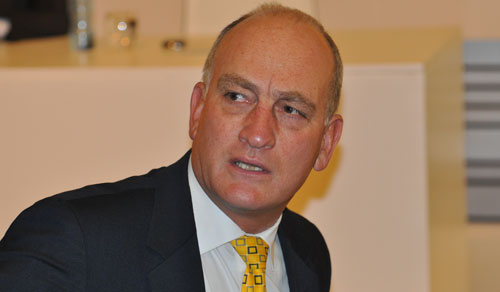
Cellular network operator MTN SA will “refarm” a portion of its spectrum allocation in the 900MHz radio frequency band in both rural and urban areas as the war between operators hots up.
MTN SA MD Karel Pienaar says the company will use the spectrum, which had previously been utilised exclusively for second-generation (2G) services, for newer, third-generation (3G) applications.
MTN has already deployed 3G at 900MHz in some parts of Limpopo, but has now begun refarming the spectrum in peri-urban areas, with plans gradually to bring the technology closer to the cities.
Operators are keen to build broadband networks at 900MHz as spectrum in this band offers a number of advantages over the 2,1GHz they have used until now for 3G.
The lower frequency provides a more consistent user experience because signals are able to penetrate walls more easily and can travel over longer distances.
In outlying areas, MTN sees a big application for 3G at 900MHz as it is cheaper to build rural broadband networks in the band as not as many base stations are required.
In urban areas, MTN will use 900MHz for “umbrella” coverage, and use 2,1GHz to provide fill-in coverage.
Refarming spectrum is a big challenge technically, made more difficult for operators with a large number of users.
MTN’s refarming of 900MHz comes as smaller rival Cell C builds a national 3G network in the same band. Cell C has relatively few 2G users in the band, making it easier for it to refarm a portion of the spectrum.
Like Cell C’s network, MTN’s 900MHz 3G towers will be capable of theoretical speeds of up to 21Mbit/s. However, this capability is only being enabled if MTN has its own backhaul infrastructure in place to support it.
Pienaar says MTN is actively extending its own fibre network, but admits it’s a slow process. “It’s matter of how quickly we can trench.”
This is not MTN Group’s first attempt at refarming spectrum. In Ghana, it’s begun an aggressive programme to redeploy spectrum in 900MHz for 3G services. MTN SA is drawing on lessons learnt by the Ghanaian operation.
Pienaar says MTN SA has actively seeded the market with cellular handsets and data cards capable of using 3G at 900MHz. Though refarming the band in urban areas is “challenging”, Pienaar says MTN has sufficient bandwidth to do it. Spectrum in dense urban areas like central Sandton won’t be refarmed — these areas will continue to be served at 2,1GHz — but less dense areas like Northcliff and Honeydew in north-western Johannesburg will be.
“We are slowly deploying and experimenting,” Pienaar says. “We have all the IT, business intelligence and planning tools to ensure we manage it in such a way that we don’t cause network congestion.”
Over time, Pienaar hopes to have more its subscribers using 3G for voice, too. “About 10% of my voice traffic today is on 3G … and we want to increase that,” he says.
“I want to offload voice users onto 3G and then we can start freeing up more spectrum in the 900MHz band for 3G.” — Duncan McLeod, TechCentral
- Subscribe to our free daily newsletter
- Follow us on Twitter or on Facebook




